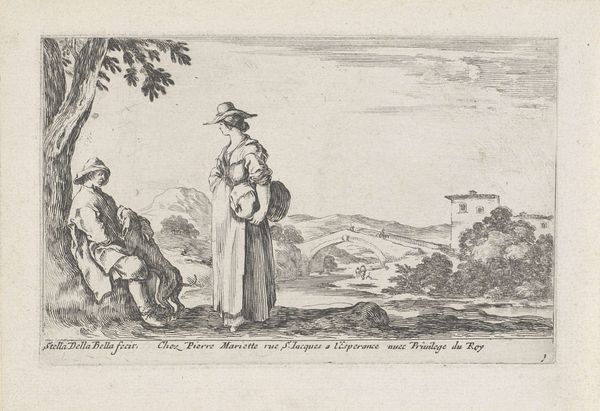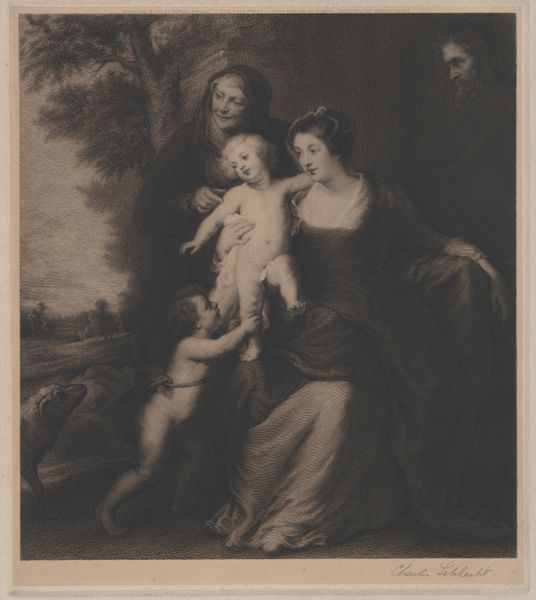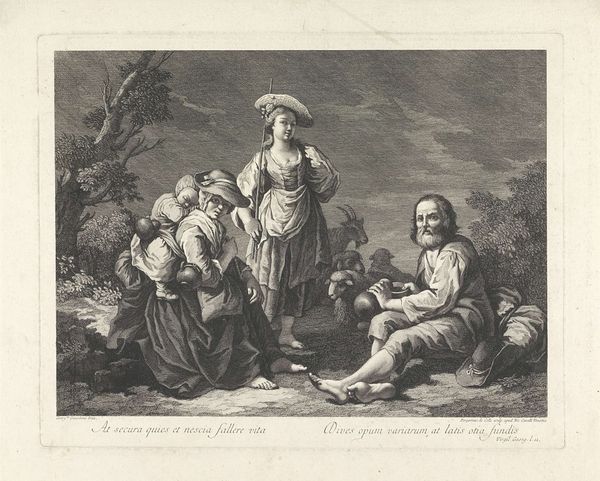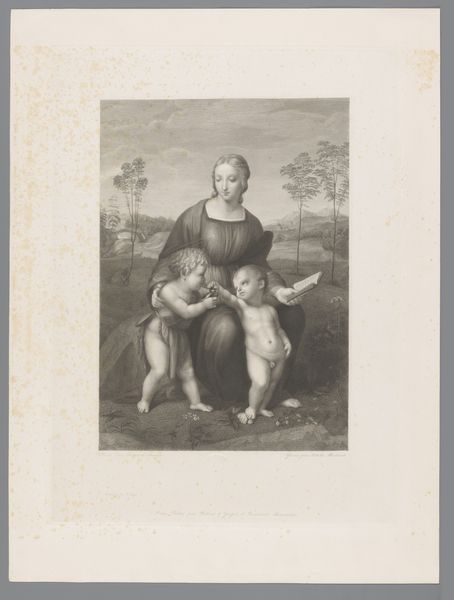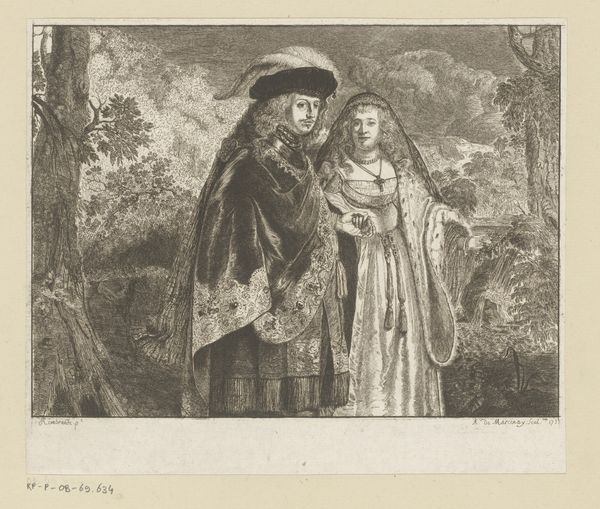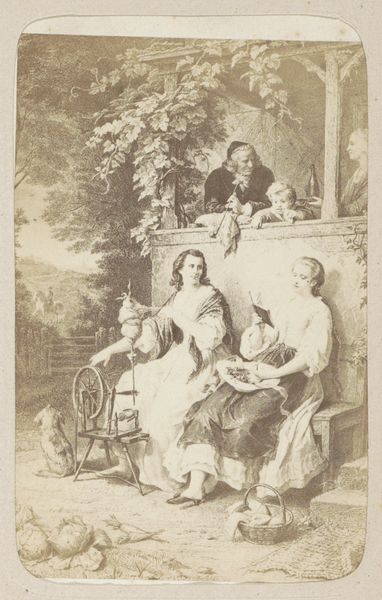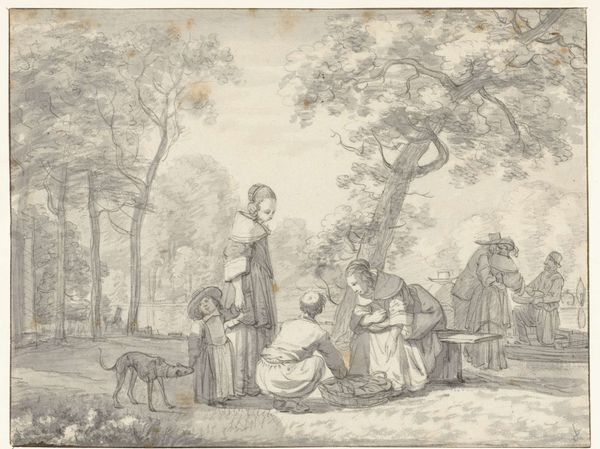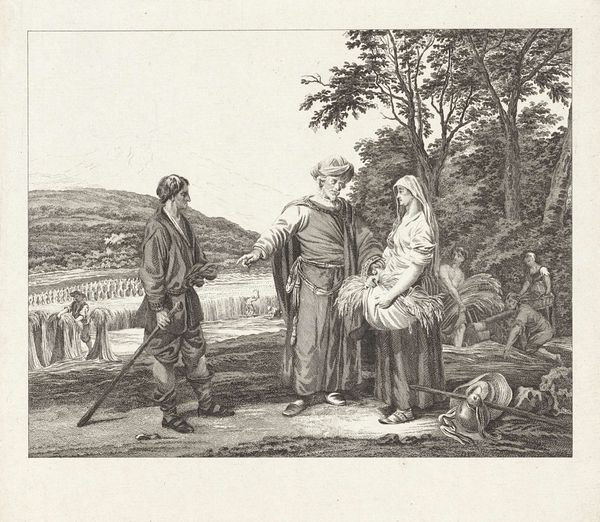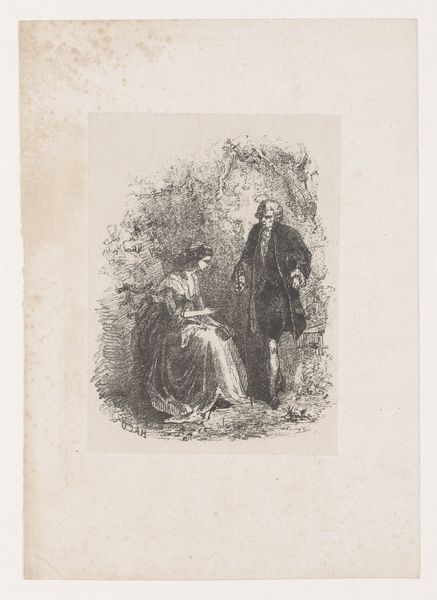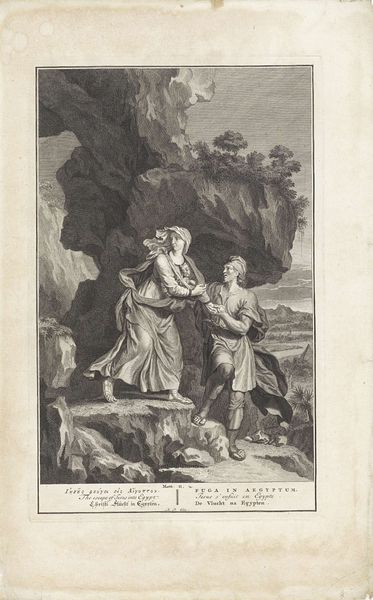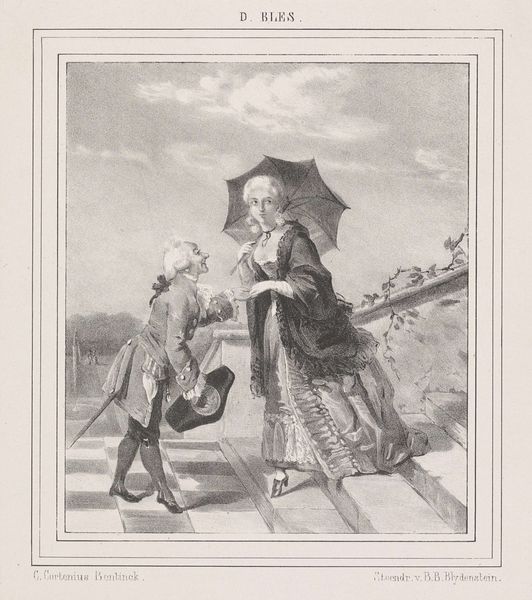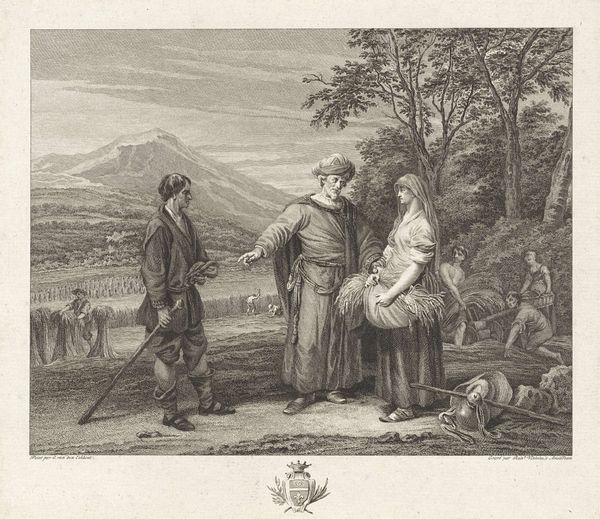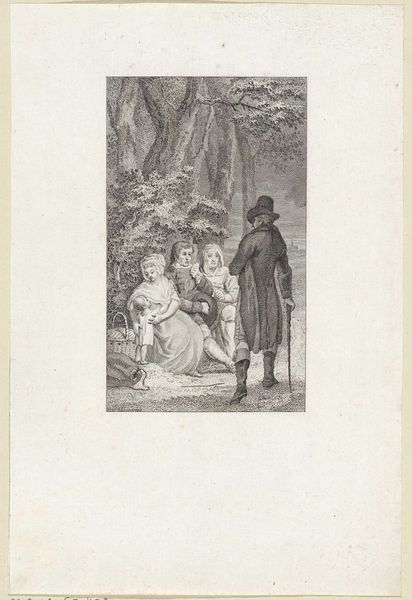
painting, oil-paint
#
portrait
#
narrative-art
#
baroque
#
painting
#
oil-paint
#
landscape
#
group-portraits
#
academic-art
Dimensions: height 55.5 cm, width 50 cm, depth 6.2 cm
Copyright: Rijks Museum: Open Domain
Curator: Let’s explore "Family in a Landscape," painted by Barend Graat around 1650-1660, crafted with oil paints. What are your initial thoughts? Editor: Immediately, I'm struck by the somber mood and limited palette. All that dark fabric! The texture appears smooth, likely finely woven wool, suggesting a certain class status achieved through material possessions. Curator: Absolutely. Consider the socio-political backdrop of the Dutch Golden Age, where portraiture served to solidify family lineage and project societal status. This work offers a window into gender roles and inheritance structures of the period. The man's sweeping cloak, his assertive stance, contrasts with the woman’s seated, demure posture. Editor: And see the detail in the ruffs, lace, and cuffs of the clothing—they represent hours of skilled labor! I wonder about the accessibility of these materials during that period. Were these fabrics locally sourced or imported, and how would that affect their perception within the community? Curator: A powerful question to ask! Think, too, of the absence of overt religious iconography, replaced instead by a focus on secular life and the burgeoning mercantile class. Even the landscape itself signifies ownership and cultivated space. This points to a shift away from the church toward the nuclear family as a core social unit. Editor: Note also how the neutral color scheme concentrates the viewer's attention onto the textiles and how expertly the textures are created with oil paint! How are the darker dyes or paints sourced, how durable or colorfast are they compared to others, what does this imply about artistic choices, production capabilities and priorities at this point in history? Curator: Indeed. I see it also reflecting on enduring notions of power dynamics. The black attire is also reminiscent of puritan austerity which was intertwined with both wealth and patriarchal family structure. The son mirrors the posture of the mother, is this the artist showing a generational dynamic? Editor: Looking at how these garments are assembled is significant for the portrait's creation of class, status and generational values, they speak to craft knowledge, trade networks, and perhaps even enslaved or forced labor somewhere in the production of the garments’ material or make. Curator: Absolutely, recognizing the historical intersectionality of power, craft and colonialism deepens our understanding of pieces such as this one. Editor: These perspectives really add to the work! It is quite compelling when these components all coalesce to bring an era into clearer view.
Comments
No comments
Be the first to comment and join the conversation on the ultimate creative platform.
